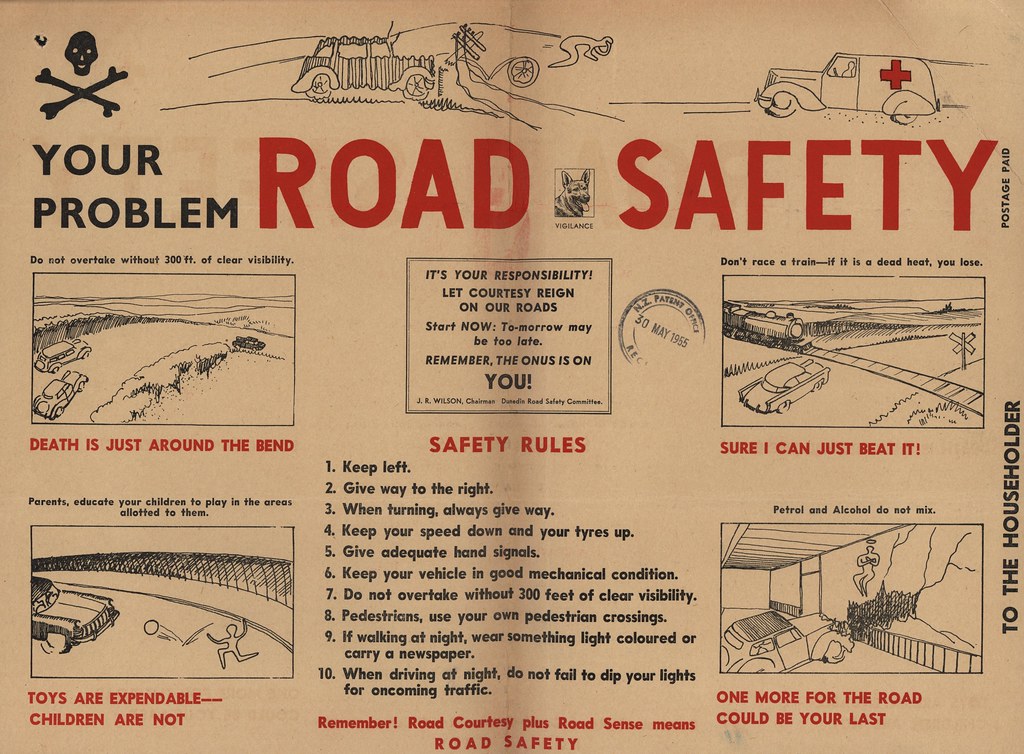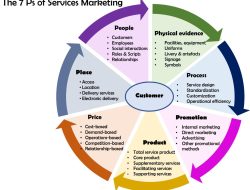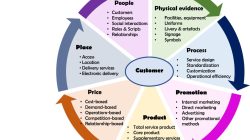How Safety and Sustainability Drive Purchasing Decisions in the Children’s Market is a crucial topic that resonates deeply with today’s conscientious parents. With safety standards being paramount and sustainability gaining traction, consumers are making informed choices when it comes to purchasing products for their children. This narrative explores the intricate balance between safety regulations and eco-friendly practices that shape the landscape of children’s products.
Understanding the significance of safety standards, such as regulations for toys and apparel, reveals how these factors influence consumer trust. As safety recalls make headlines, parents are increasingly prioritizing products that guarantee the well-being of their children. On the other hand, sustainability is not just a trend; it’s a commitment to the planet. Brands are now using sustainable materials, and communicating their efforts effectively to resonate with eco-aware parents, ultimately affecting their purchasing decisions.
Understanding Safety in the Children’s Market
In the ever-evolving landscape of children’s products, safety stands as a paramount concern for parents and manufacturers alike. With a growing awareness of potential hazards, safety standards play a crucial role in ensuring that toys and apparel are not only enjoyable but also secure for little ones. Understanding these standards is essential for making informed purchasing decisions that protect children while fostering sustainable practices.Safety standards in the children’s market are designed to minimize risks associated with product use.
Various regulatory bodies have established guidelines to ensure that toys and apparel meet specific safety criteria, thereby preventing accidents and injuries. These standards include rigorous testing protocols, materials restrictions, and labeling requirements that manufacturers must comply with.
Significance of Safety Standards in Children’s Products
The importance of adhering to safety standards is underscored by the trust that parents place in these products. When shopping for children’s items, safety certifications influence purchasing behavior significantly as parents seek assurance that they are making the right choices for their children.
- Safety certifications like ASTM F963 and EN71 provide guidelines for toy safety, ensuring that products are free from choking hazards, toxic substances, and sharp edges.
- Children’s clothing regulations, such as the Consumer Product Safety Improvement Act (CPSIA), enforce limits on lead and phthalates, safeguarding children from harmful chemicals.
- Manufacturers are required to perform regular safety audits and risk assessments to confirm compliance with these regulations, maintaining high standards of safety.
The impact of safety recalls on consumer trust cannot be overstated. When a product is recalled due to safety concerns, it can lead to significant consequences for manufacturers, both in terms of financial loss and damage to brand reputation. Parents become more cautious in their purchasing decisions, often opting for brands with a proven track record of safety and reliability.
“A single safety recall can lead to a dramatic decline in consumer confidence, affecting future sales and brand loyalty.”
In recent years, high-profile recalls have highlighted the necessity for transparent communication between manufacturers and consumers. For instance, when a popular toy brand recalled a line of products due to safety risks, it prompted parents to scrutinize labels more closely, favoring brands that prioritize safety in their product lines. This shift illustrates the direct correlation between safety measures and purchasing decisions within the children’s market.
The Role of Sustainability in Consumer Choices: How Safety And Sustainability Drive Purchasing Decisions In The Children’s Market

Sustainability has emerged as a key consideration for consumers, especially in the children’s market. It embodies the idea of meeting present needs without compromising the ability of future generations to meet theirs. Parents today are increasingly aware of the environmental impact of their purchasing decisions, making sustainability a cornerstone of their buying choices. This shift in consumer awareness reflects a desire to nurture not just their children, but also the planet they will inherit.
The importance of sustainability in children’s products extends beyond mere eco-friendliness; it encompasses ethical production practices, the sourcing of materials, and the overall lifecycle of a product. Parents seek assurance that the products they choose for their children are safe, sustainable, and contribute positively to the environment. As a result, brands that prioritize sustainability in their offerings are gaining traction and loyalty among conscientious consumers.
Examples of Sustainable Materials Used in Toys and Clothing
Understanding the materials that constitute children’s products is vital for parents aiming to make sustainable choices. Several innovative materials have emerged that balance durability with eco-friendliness. Here are some notable examples:
- Bamboo: Fast-growing and renewable, bamboo is often used in toys and clothing. Its natural antibacterial properties make it an excellent choice for children’s items.
- Recycled plastics: Many brands are now producing toys from recycled plastics, reducing waste and diverting materials from landfills.
- Organic cotton: Unlike conventional cotton, organic cotton is grown without synthetic pesticides or fertilizers, making it a safer choice for children’s clothing.
- Natural rubber: Used in many eco-friendly toys, natural rubber is biodegradable and free from harmful chemicals.
Brands utilize these sustainable materials not just to create products, but also to forge a deeper connection with environmentally conscious parents. By communicating their commitment to sustainability, companies can foster trust and loyalty.
Brands Communicating Sustainability Efforts to Parents
Effective communication of sustainability initiatives plays a crucial role in shaping consumer perceptions. Brands are increasingly adopting transparent practices to showcase their efforts in sustainability. This includes:
- Labeling and certifications: Products that carry certifications such as Global Organic Textile Standard (GOTS) or Fair Trade help parents easily identify sustainable options.
- Storytelling: Brands share narratives about their production processes, sourcing of materials, and community impact, making sustainability relatable to consumers.
- Engagement on social media: Many companies leverage platforms like Instagram and Facebook to highlight their sustainability journeys, allowing parents to engage directly with their ethos.
- Educational content: Providing resources and information on the benefits of sustainability helps parents make informed choices. For example, blogs, videos, and infographics can illustrate how sustainable practices contribute to a healthier planet.
Through these strategies, brands are not only promoting their products but also cultivating a community of environmentally aware consumers who prioritize sustainability in their purchasing decisions. By choosing brands that align with their values, parents play an active role in shaping a more sustainable future for their children.
Consumer Behavior Trends in the Children’s Market
In recent years, the purchasing decisions of parents in the children’s market have increasingly leaned towards products that prioritize safety and sustainability. As awareness regarding environmental issues and child safety has grown, so too has the demand for items that reflect these values. Parents are now more informed and selective, often conducting extensive research before making a purchase, aiming to align their values with their buying habits.The influence of safety and sustainability on consumer behavior is particularly pronounced.
Parents are looking for products that not only protect their children but also contribute positively to the environment. This dual focus on safety and sustainability signifies a significant shift in purchasing habits within the children’s market, driven by a desire for quality, ethical practices, and eco-friendly materials.
Consumer Preferences for Safety Versus Sustainability
To understand how parents weigh safety against sustainability, the following comparison table illustrates consumer preferences in the children’s market.
| Factor | Percentage of Parents Preferring |
|---|---|
| Safety | 68% |
| Sustainability | 32% |
This table highlights a clear preference for safety over sustainability among parents, indicating that while sustainability plays a role in purchasing decisions, it is often secondary to the immediate concern for child safety.
Demographic Factors Affecting Purchasing Decisions
Various demographic factors significantly impact purchasing decisions related to safety and sustainability in the children’s market. Understanding these influences can provide valuable insights into consumer behavior.
Age of Parent
Younger parents (ages 25-35) tend to prioritize sustainability more than older parents (ages 36-50), who often view safety as paramount.
Income Level
Higher-income families are more likely to invest in sustainable products, often perceiving them as higher quality, while lower-income families may prioritize affordability and immediate safety concerns.
Geographic Location
Urban parents are generally more exposed to sustainability initiatives and eco-friendly products, leading to a greater demand for sustainable options compared to parents in rural areas, who may prioritize safety over sustainability due to fewer available choices.
Education Level
Parents with higher educational attainment are more inclined to research and value sustainability, often incorporating it into their purchasing habits. Conversely, parents with less education may rely more heavily on brand reputation and safety certifications.These demographic trends highlight how different factors can shape consumer preferences, illustrating the complex landscape of the children’s market where safety and sustainability are both prominent considerations for parents.
The Impact of Marketing on Purchasing Decisions
In the competitive landscape of the children’s market, marketing strategies play a pivotal role in shaping consumer behavior. As parents increasingly prioritize safety and sustainability, brands are adapting their messaging to resonate with these values. The integration of these critical aspects into marketing communications not only establishes trust but also drives purchasing decisions among conscientious consumers.
Incorporation of Safety and Sustainability Messages
Effective marketing strategies today are designed to highlight safety and sustainability, creating a compelling narrative that aligns with consumer values. Brands utilize various methods to communicate these messages, which include:
- Emphasizing Certifications and Standards: Brands often showcase safety certifications and eco-labels on packaging and advertising materials. For instance, products that meet ASTM (American Society for Testing and Materials) standards are prominently advertised to assure parents of their safety.
- Storytelling in Campaigns: Brands create engaging narratives that illustrate their commitment to sustainability. Companies like Green Toys use storytelling to convey how their toys are made from recycled materials, reinforcing a message of environmental responsibility.
- Transparent Supply Chains: Marketing campaigns often highlight transparent sourcing and manufacturing processes. Brands like Babyganics promote their eco-friendly ingredients and sustainable practices, enhancing consumer trust in their products.
- Social Proof and Testimonials: By incorporating testimonials from satisfied customers who value safety and sustainability, brands can enhance credibility. For example, brands like Honest Company feature real parents sharing their positive experiences with safety-conscious products.
Case Studies of Successful Brands
Several brands have successfully integrated safety and sustainability into their marketing strategies, setting benchmarks in the children’s market. Notable examples include:
- LEGO: In its “Sustainable Materials” campaign, LEGO has committed to using sustainable materials in their products by 2030. Their marketing emphasizes the importance of environmental stewardship, resonating deeply with eco-conscious families.
- Skip Hop: This brand has launched campaigns showcasing their safe, BPA-free products designed for infants and toddlers. Their marketing strategy revolves around a family-friendly image that emphasizes safety without compromising on style.
- Chicco: Chicco focuses on promoting their safety features through interactive marketing strategies, such as safety workshops for parents. Their marketing emphasizes both the safety of their products and the sustainability of their materials.
Measuring Effectiveness of Marketing
Understanding the impact of marketing strategies on purchasing decisions necessitates effective measurement methods. Brands utilize various metrics to gauge success, including:
- Consumer Surveys: Conducting surveys to gather feedback on safety and sustainability messaging. These surveys can reveal consumer perceptions and inform future marketing strategies.
- Sales Data Analysis: Tracking sales figures before and after marketing campaigns provides quantitative evidence of effectiveness. Increases in sales can often be correlated with heightened awareness of safety and sustainability.
- Social Media Engagement: Analyzing engagement metrics on social media platforms helps brands understand how their messages resonate with consumers. Higher engagement levels often indicate successful communication of safety and sustainability values.
- Brand Awareness Studies: Conducting studies to measure changes in brand awareness pre- and post-campaign can help determine the effectiveness of messaging related to safety and sustainability.
The Role of Certifications and Labels
In the vibrant and diverse children’s market, certifications and labels serve as essential indicators of safety and sustainability. Parents often look for these markers to ensure that their children’s products meet rigorous safety standards and are environmentally friendly. Certifications can simplify decision-making, transforming complex information into straightforward choices that prioritize both a child’s wellbeing and the planet’s health.Understanding the importance of certifications is crucial for making informed purchasing decisions.
Recognizing key certifications can help parents navigate the myriad of products available and ensure that the items they choose are not only safe but also sustainable. Here are some of the most recognized certifications that signify safety and sustainability in children’s products:
Key Certifications for Safety and Sustainability
When shopping for children’s products, knowing which certifications to look for can provide peace of mind. The following certifications are widely respected and indicate that a product adheres to stringent safety and environmental standards:
- ASTM International: Products that meet ASTM standards are rigorously tested for safety and quality, ensuring they are safe for children.
- Greenguard Gold: This certification signifies that a product has been tested for low chemical emissions, promoting healthier indoor air quality.
- OEKO-TEX Standard 100: This label ensures that textiles are free from harmful substances, making them safe for baby products and clothing.
- Global Organic Textile Standard (GOTS): Products with this label are made from organic fibers and meet strict environmental and social criteria.
- FSC Certified: This certification indicates that wood products come from responsibly managed forests, supporting sustainable forestry practices.
As consumers become more discerning, the significance of such certifications increasingly resonates with parents seeking products that align with their values. The following testimonials illustrate the importance of certifications in the purchasing decisions of parents:
“I always check for certifications when buying toys for my kids. Knowing they meet safety standards gives me peace of mind.”
Sarah, mother of two.
“Choosing organic baby clothing was a no-brainer for us. The GOTS label reassured us that we were making a safe choice for our baby and the environment.”
Mark, father of a newborn.
Interpreting product labels can often feel daunting, but understanding the claims made can empower consumers to make informed choices. Here’s how to effectively interpret safety and sustainability claims on product labels:
Interpreting Product Labels for Safety and Sustainability
When assessing product labels, look for specific terms and certifications that indicate quality. Familiarize yourself with common terminologies used in safety and sustainability claims, as understanding these concepts is key to making the best choices for your children. Consider the following aspects when evaluating product labels:
- Certifications: Check for recognized labels such as those mentioned above. These signify that the product has undergone testing and meets established safety and environmental standards.
- Ingredient Transparency: Look for clear disclosures of materials used in the product. Labels that provide detailed ingredient lists often indicate a commitment to safety and sustainability.
- Country of Origin: Understanding where a product is made can affect both safety and environmental impact. Products made in countries with strict safety regulations often adhere to higher standards.
By understanding and utilizing certifications and labels, parents can navigate the children’s market more effectively, ensuring they select products that prioritize safety and sustainability. This informed approach not only benefits children but also supports a healthier planet for future generations.
Future Trends in Safety and Sustainability
As the children’s market evolves, safety and sustainability continue to play pivotal roles in shaping consumer purchasing decisions. Emerging technologies and innovative practices are not only enhancing product safety but also promoting environmental stewardship, aligning with the values of modern families. This segment delves into the anticipated trends that reflect a commitment to both safety and sustainability.
Emerging Trends in Safety Technology
Technology is advancing rapidly, leading to the development of various safety innovations tailored for children’s products. Notable trends include:
- Smart Toys and Devices: Connected toys equipped with sensors can monitor usage patterns and alert parents to potential safety issues, ensuring a safe play environment.
- Advanced Materials: The use of non-toxic, biodegradable materials in children’s products enhances safety and reduces environmental impact. For example, companies are now utilizing plant-based plastics in toy manufacturing.
- AI and Machine Learning: These technologies are being used for real-time safety assessments and to predict safety risks based on consumer feedback and usage data.
The Influence of Consumer Advocacy Groups
Consumer advocacy groups are increasingly influencing standards in safety and sustainability within the children’s market. They are driving initiatives that shape product development and regulatory changes. These organizations focus on:
- Stricter Safety Regulations: Advocacy groups are pushing for more stringent safety standards that protect children from harmful substances and manufacturing defects, such as the recent push for transparency in chemical usage in toys.
- A Sustainable Future: Initiatives aimed at promoting eco-friendly practices are gaining traction, with groups urging brands to adopt circular economy principles to minimize waste.
- Consumer Education: Advocacy groups are also educating parents about safety standards, helping them make informed choices and encouraging manufacturers to adhere to best practices.
Evolving Consumer Expectations, How Safety and Sustainability Drive Purchasing Decisions in the Children’s Market
Today’s consumers are becoming more discerning regarding safety and sustainability, leading to heightened expectations in these areas. Significant shifts include:
- Transparency in Sourcing: Parents increasingly demand information about where and how products are made. Brands that provide detailed sourcing information and sustainability efforts are favored.
- End-of-Life Considerations: Consumers are looking for products that offer end-of-life solutions, such as recycling programs and biodegradable materials, showcasing a preference for reducing environmental impact.
- Holistic Safety Approaches: Safety is no longer only about avoiding hazards; consumers expect brands to consider the overall well-being of children, incorporating mental and emotional safety into their designs.
“The future of the children’s market lies in our ability to harmonize safety and sustainability, meeting the evolving expectations of conscious consumers.”













